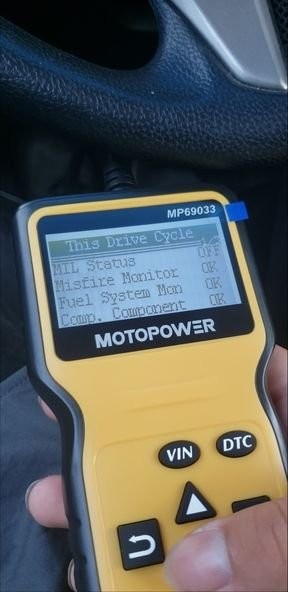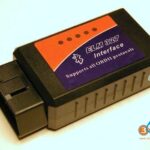Ensuring your Honda Accord passes its emissions test is crucial for legal compliance and environmental responsibility. A common hurdle car owners face is dealing with “incomplete” OBDII monitors. These monitors are essential for verifying your vehicle’s emission control systems are functioning correctly. If they are not ready, your vehicle might fail the emissions test, even if there are no apparent issues. This article delves into a real-world scenario encountered by a Honda Accord owner and provides insights into resolving OBDII monitor readiness problems, focusing on the “Honda Accord Obdii” system.
OBDII (On-Board Diagnostics II) monitors are diagnostic programs within your car’s computer that continuously check various emission control systems. These systems include the Catalyst Monitor, Oxygen Sensor Monitor, Oxygen Sensor Heater, and EGR System, among others. For your Honda Accord to pass an emissions or smog check, these monitors need to be in a “ready” or “complete” state. When a monitor is “incomplete,” it signifies that the system hasn’t been fully evaluated since the last time the diagnostic codes were cleared or the battery was disconnected.
One Honda Accord owner experienced this exact issue with their 2012 Accord LX Coupe. An OBDII reader indicated “incomplete” status for several crucial monitors: Catalyst Monitor, Oxygen Sensor Monitor, Oxygen Sensor Heater, and EGR System.
Initially, a mechanic suggested a simple driving procedure: drive at 50-60 mph for 30-50 miles. However, this proved ineffective in resetting the monitors to a “ready” state.
Seeking a more authoritative solution, the Honda Accord owner consulted their vehicle’s owner’s manual. The manual provided a detailed “drive cycle” procedure designed to set the OBDII monitors. This procedure involved a series of steps:
- Fuel Level: Fill the gas tank to approximately 3/4 full.
- Park Overnight: Ensure the vehicle is parked and the engine is cold for at least 6 hours.
- Idle in Park: Start the engine and let it idle in park for 20 seconds.
- Elevated RPM Idle: While still in park, increase the engine speed to 2000 RPM and hold it until the engine temperature gauge reaches 1/4 of its scale.
- Idle Again: Let the engine idle in park for another 20 seconds without touching the accelerator pedal.
- Highway Driving: Drive at 50-60 mph for 20 minutes, followed by 90 seconds of coasting without pressing the accelerator.
- City/Suburban Driving: Drive in city or suburban traffic for 10 minutes, incorporating several seconds of coasting without using the accelerator or brake.
- Park and Cool Down: Park the car and turn off the engine for 30 minutes.
Despite diligently following these steps, the OBDII reader initially still showed “incomplete” monitors.
The turning point came when the Honda owner revisited their OBDII reader and noticed different options within the I/M Readiness menu: “Since DTCs cleared” and “This Drive Cycle.” Previously, they had been checking the “This Drive Cycle” option, which continued to display “incomplete” results. However, upon selecting “Since DTCs cleared,” they discovered that all the previously troublesome monitors were now marked “OK.”
This revelation highlighted a critical detail: for emissions testing, it is the monitor status under the “Since DTCs cleared” option that matters. It appears the drive cycle procedure, when performed correctly, successfully sets the monitors, but this status might only be reflected in the “Since DTCs cleared” reading.
Armed with this new understanding, the Honda Accord owner proceeded to the smog check station, and the vehicle successfully passed the emissions test. This experience underscores the importance of understanding your OBDII system and the nuances of different reader options. For Honda Accord owners facing similar OBDII monitor issues, especially when preparing for an emissions test, performing the manufacturer-recommended drive cycle and verifying monitor readiness under the “Since DTCs cleared” option on your OBDII reader can be key to a successful outcome. If issues persist, consulting a qualified mechanic is always recommended to diagnose any underlying problems with your Honda Accord’s emission control systems.



